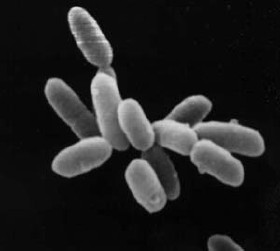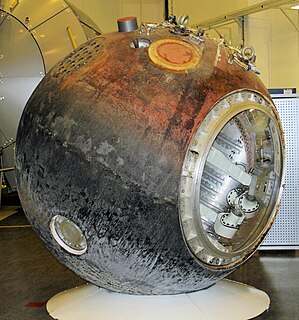 W
WAn extremophile is an organism with optimal growth in environmental conditions considered extreme in that it is challenging for a carbon-based life form, such as all life on Earth, to survive.
 W
WAlkaliphiles are a class of extremophilic microbes capable of survival in alkaline environments, growing optimally around a pH of 10. These bacteria can be further categorized as obligate alkaliphiles, facultative alkaliphiles and haloalkaliphiles.
 W
WArchaea constitute a domain of single-celled organisms. These microorganisms lack cell nuclei and are therefore prokaryotes. Archaea were initially classified as bacteria, receiving the name archaebacteria, but this classification is obsolete.
 W
WAustin Creek is a 16.0-mile-long (25.7 km) southward-flowing stream in the mountains of western Sonoma County, California which empties into the Russian River about 4 miles (6 km) from the Pacific Ocean.
 W
WBacillus odysseyi is a Gram-positive, aerobic, rod-shaped, round-spore- and endospore-forming eubacterium of the genus Bacillus. This novel species was discovered by scientist Myron T. La Duc of NASA’s Biotechnology and Planetary Protection Group, a unit whose purpose is to clean and sterilize spacecraft so as not to have microorganisms contaminate other celestial bodies or foreign microorganisms contaminate Earth, on the surface of the Mars Odyssey in a clean room at the Jet Propulsion Laboratory in La Cañada Flintridge before the spacecraft was launched to space. La Duc named the bacterium Bacillus odysseyi sp. nov. after the Odyssey mission. It had apparently evolved to live in the sparse environment of a clean room, and its secondary spore coat makes it especially resistant to radiation.
 W
WBacillus subtilis, known also as the hay bacillus or grass bacillus, is a Gram-positive, catalase-positive bacterium, found in soil and the gastrointestinal tract of ruminants and humans. A member of the genus Bacillus, B. subtilis is rod-shaped, and can form a tough, protective endospore, allowing it to tolerate extreme environmental conditions. B. subtilis has historically been classified as an obligate aerobe, though evidence exists that it is a facultative anaerobe. B. subtilis is considered the best studied Gram-positive bacterium and a model organism to study bacterial chromosome replication and cell differentiation. It is one of the bacterial champions in secreted enzyme production and used on an industrial scale by biotechnology companies.
 W
WBIOPAN is a multi-user research program by the European Space Agency (ESA) designed to investigate the effect of the space environment on biological material. The experiments in BIOPAN are exposed to solar and cosmic radiation, the space vacuum and weightlessness, or a selection thereof. Optionally, the experiment temperature can be stabilized. BIOPAN hosts astrobiology, radiobiology and materials science experiments.
 W
WChroococcidiopsis is a photosynthetic, coccoidal bacterium and while a diversity of species and cultures exist within the genus, with a diversity of phenotypes, some members of the order Chroococidiopsidales are known for their ability to survive harsh environmental conditions, including both high and low temperatures, ionizing radiation, and high salinity. Organisms capable of living in such harsh conditions are referred to as extremophiles.
 W
WDPANN is a superphylum of Archaea first proposed in 2013. Many members show novel signs of horizontal gene transfer from other domains of life. They are known as nanoarchaea or ultra-small archaea due to their smaller size (nanometric) compared to other archaea.
 W
WAn electrotroph is a microorganism which can receive electrons necessary for its growth from an electrode terminal.
 W
WEXPOSE is a multi-user facility mounted outside the International Space Station dedicated to astrobiology. EXPOSE was developed by the European Space Agency (ESA) for long-term spaceflights and was designed to allow exposure of chemical and biological samples to outer space while recording data during exposure.
 W
W"Monothalamea" is a grouping of foraminiferans, traditionally consisting of all foraminifera with single-chambered tests. Recent work has shown that the grouping is paraphyletic, and as such does not constitute a natural group; nonetheless, the name "monothalamea" continues to be used by foraminifera workers out of convenience.
 W
WThe nematodes or roundworms constitute the phylum Nematoda, with plant-parasitic nematodes being known as eelworms. They are a diverse animal phylum inhabiting a broad range of environments. Taxonomically, they are classified along with insects and other moulting animals in the clade Ecdysozoa, and unlike flatworms, have tubular digestive systems with openings at both ends. Like tardigrades they have a reduced number of Hox genes, but as their sister phylum Nematomorpha has kept the ancestral protostome Hox genotype, it shows that the reduction has occurred within the nematode phylum.
 W
WRadiotrophic fungi are fungi that can use radiation as an energy source to stimulate growth. Radiotrophic fungi can be found in extreme environments due to their ability to survive and grow in the presence of radiation. They have been found in the aftermath of a nuclear accident and in outer space. Most radiotrophic fungi use melanin to accomplish this. This process of using radiation and melanin for energy is called radiosynthesis. Radiosynthesis is thought to be a similar process to the anaerobic pathway that occurs when oxygen is not present. However, it is not known if multi-step processes such as photosynthesis or chemosynthesis are used in radiosynthesis.
 W
WStreptomyces sp. myrophorea, isolate McG1 is a species of Streptomyces, that originates from a (ethnopharmacology) folk cure in the townland of Toneel North in Boho, County Fermanagh. This area was previously occupied by the Druids and before this neolithic people who engraved the nearby Reyfad stones. Streptomyces sp. myrophorea is inhibitory to many species of ESKAPE pathogens, can grow at high pH (10.5) and can tolerate relatively high levels of radioactivity.
 W
WSulfate-reducing microorganisms (SRM) or sulfate-reducing prokaryotes (SRP) are a group composed of sulfate-reducing bacteria (SRB) and sulfate-reducing archaea (SRA), both of which can perform anaerobic respiration utilizing sulfate (SO42–) as terminal electron acceptor, reducing it to hydrogen sulfide (H2S). Therefore, these sulfidogenic microorganisms "breathe" sulfate rather than molecular oxygen (O2), which is the terminal electron acceptor reduced to water (H2O) in aerobic respiration.
 W
WTersicoccus phoenicis is a member of the bacterial family Micrococcaceae. It has only been found in two spacecraft assembly clean room facilities and is resistant to the methods normally used to clean such facilities. The species name is derived from tersi, Latin for clean; coccus, Greek for berry; and phoenicis, from NASA's Phoenix lander, the spacecraft being prepared when these bacteria were first discovered.
 W
WThermostability is the quality of a substance to resist irreversible change in its chemical or physical structure, often by resisting decomposition or polymerization, at a high relative temperature.
 W
WXenophyophorea is a clade of foraminiferans. Members of this class are multinucleate unicellular organisms found on the ocean floor throughout the world's oceans, at depths of 500 to 10,600 metres. They are a kind of foraminiferan that extracts minerals from their surroundings and uses them to form an exoskeleton known as a test.